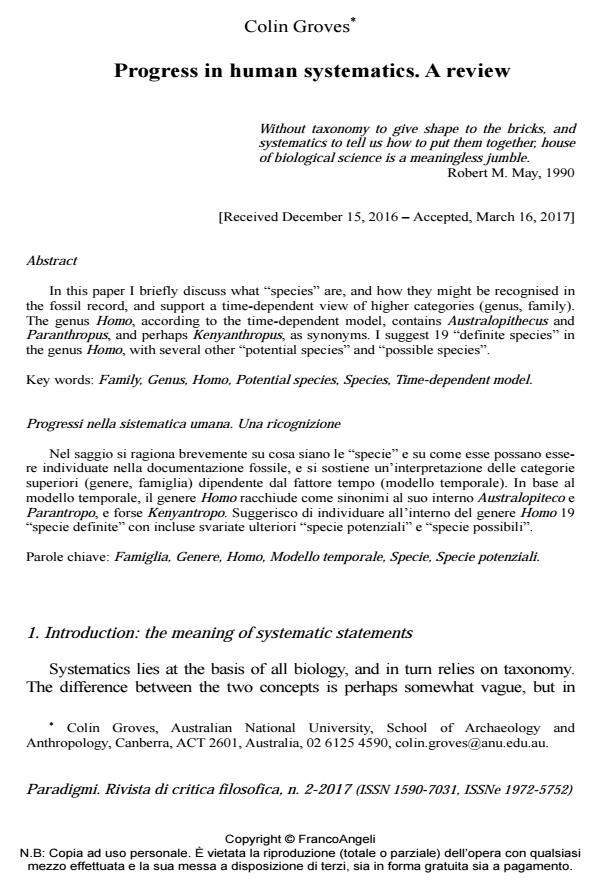Progress in human systematics. A review
Titolo Rivista PARADIGMI
Autori/Curatori Colin Groves
Anno di pubblicazione 2017 Fascicolo 2017/2
Lingua Inglese Numero pagine 16 P. 59-74 Dimensione file 198 KB
DOI 10.3280/PARA2017-002005
Il DOI è il codice a barre della proprietà intellettuale: per saperne di più
clicca qui
Qui sotto puoi vedere in anteprima la prima pagina di questo articolo.
Se questo articolo ti interessa, lo puoi acquistare (e scaricare in formato pdf) seguendo le facili indicazioni per acquistare il download credit. Acquista Download Credits per scaricare questo Articolo in formato PDF

FrancoAngeli è membro della Publishers International Linking Association, Inc (PILA)associazione indipendente e non profit per facilitare (attraverso i servizi tecnologici implementati da CrossRef.org) l’accesso degli studiosi ai contenuti digitali nelle pubblicazioni professionali e scientifiche
In this paper I briefly discuss what "species" are, and how they might be recognised in the fossil record, and support a time-dependent view of higher categories (genus, family). The genus Homo, according to the time-dependent model, contains Australopithecus and Paranthropus, and perhaps Kenyanthropus, as synonyms. I suggest 19 "definite species" in the genus Homo, with several other "potential species" and "possible species".
Nel saggio si ragiona brevemente su cosa siano le "specie" e su come esse possano essere individuate nella documentazione fossile, e si sostiene un’interpretazione delle categorie superiori (genere, famiglia) dipendente dal fattore tempo (modello temporale). In base al modello temporale, il genere Homo racchiude come sinonimi al suo interno Australopiteco e Parantropo, e forse Kenyantropo. Suggerisco di individuare all’interno del genere Homo 19 "specie definite" con incluse svariate ulteriori "specie potenziali" e "specie possibili".
Parole chiave:Famiglia, Genere, Homo, Modello temporale, Specie, Specie potenziali.
Colin Groves, Progress in human systematics. A review in "PARADIGMI" 2/2017, pp 59-74, DOI: 10.3280/PARA2017-002005